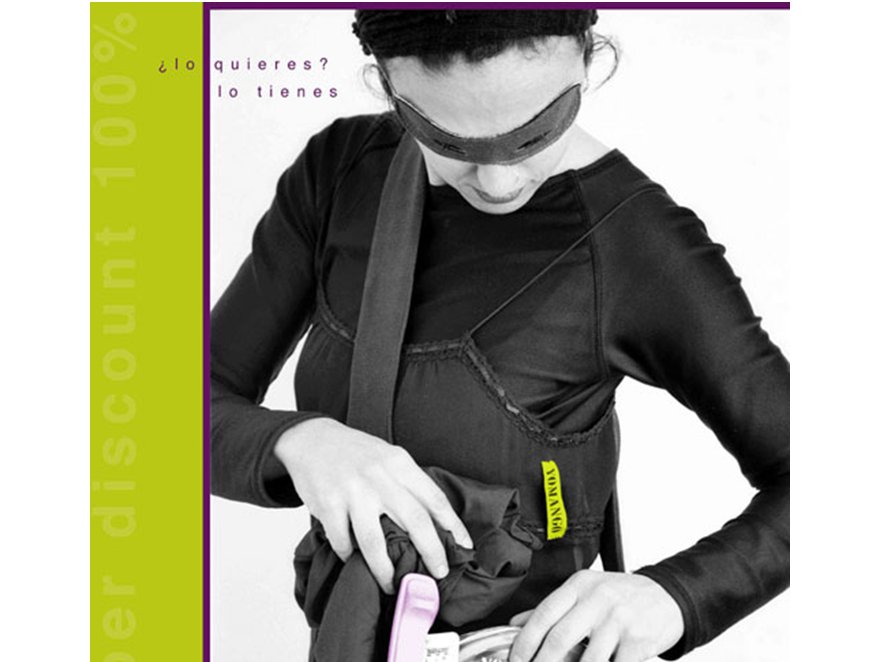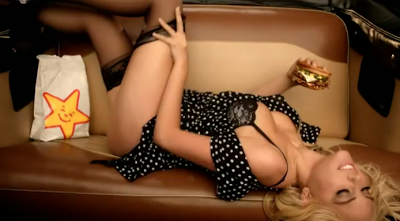Carl’s Jr. just recently released a commercial promoting their new TexMex burger that tastefully incorporated the controversial topic of illegal immigration. In the commercial, two teams of attractive girls, one representing Texas and one representing Mexico, squared off in a volleyball game. The game was to determine whether the burger was “tex” or “mex.” The game took place on the Mexican and Texas border, which served as the volleyball net. While the two teams are competing against each other, two men watching the game ask each other if they should tell them that the burger is both “tex” and “mex.” While this commercial was an advertisement for the fast food chain’s new product, it speaks at a much deeper level regarding the topic of illegal immigration and border patrol in general. They used the TexMex burger commercial to representation the insignificance of strict border regulations and to promote the idea of unity and equality between the US and Mexico. The commercial uses artistry and creative metaphors to make the viewer stop and encode what the message is and why it is important. Overall, this commercial demonstrates the power and influence that artistry can have over political and criminal matters. The issue of illegal immigration has been a very controversial topic that has been discussed many times in the recent republican debates. Donald Trump has a very strong position against illegal immigration and is pushing for stricter border patrol. However, an interesting figure has recently countered his notions: Pope Francis. In it unclear whether or not the statements the Pope made about this topic were direct digs at Donald Trump, however, he reminded people of the insignificance the border wall is in the grand scheme of things. He insinuated that we, as humans have the moral responsibility to care for those in need and not allow political factors to get in the way of that. Francis told migrants from Mexico and the rest of the world to “not feel discouraged by all the challenges and hardships” they face, and said they should never be ashamed of their own traditions. He recognized that people are immigrating to the United States due to tough conditions in Mexico and the need for a better life. He is trying to get people to relate to this struggle and put themselves in the migrants’ shoes. In other words, he is stressing the human nature aspect in this “crime” of illegal immigration. This brings up the interesting concept of crimes that are illegal but deemed moral at the same time. If a person that is essentially the universal spokesperson for morality says that committing a crime is okay, it makes people reflect on this idea as well and reconsider the ideas that politics have pushed into their heads. While he doesn’t come straight out with the words saying he is for illegal immigration, such as a politician would, he uses a subtlety that that gets this idea across. This is the same subtlety that Carl’s Jr. uses in their commercial. They both use words that do not undermine the opposition but rather use a positive unifying approach. The commercial is very lighthearted as the two teams are playing together. It also slightly ridicules the idea of competing against each other in the first place. The burger is a combination of Texas and Mexico, and they are competing against each other as two separate teams. In reality, the burger is called TexMex, a blend of the two cultures. They are, therefore, blinded to the fact that they are really 1 united whole. This commercial immersed itself into the debate over illegal immigration using artistry to promote a crime for the good of humanity. In his article that discusses the Carl’s Jr. TexMex commercial, Luke O’Neil explains that, “Poets are the unacknowledged legislators of the world.” This is reiterating the idea that art can indeed move people more than things like political debates. Art makes people stop and think rather than force-feeding them ideas. Therefore, art allows for interpretation. For example, a painting does not always explicitly tell the viewer the artist’s stance. However, the viewer has to look at it and interpret it long enough to gage what the artist is trying to say by really observing the work. Social messages that are incorporated into artwork and creative platforms can truly have a higher impact on people than traditional methods, such as speeches, debates, and writings. The viewers are not pushed or forced into believing the ideas, but rather led and come to a consensus on their own by seeing it in a creative perspective. As discussed before, the topic of legality vs. morality comes up a lot in the study of criminology. Illegal immigration, for example, is something that is illegal, yet not necessarily immoral. Sometimes, people argue, this crime can be excused because it is seen as necessary in achieving a good life. For example, the fight videos on YouTube that we viewed in class demonstrate this idea. These guys, who come from very poor areas, are creating what they see as an art piece in order to survive. They’re intentions, therefore, may not be to break the law and disservice society, but rather to use these creative pieces to make a living. However, it can be difficult to determine which crimes are deemed “moral” and which ones are “immoral.” Another example is a poor person stealing food to keep their family alive. Although it is technically against the law, their circumstance is in a grey area. Some artwork, such as the Carl’s Jr. commercial, promotes “criminal” activities but sheds them in a new light to essentially take the criminal aspect off of it. In today’s world, media and images can speak much farther than words and make people think a little deeper about the topic presented. For example, memes on the Internet are a popular tactic for demonstrating an idea or perspective. Although artwork can promote criminal activity, it can make people really think about how “criminal” these acts really are.
#ads #carlsjr #immigration







